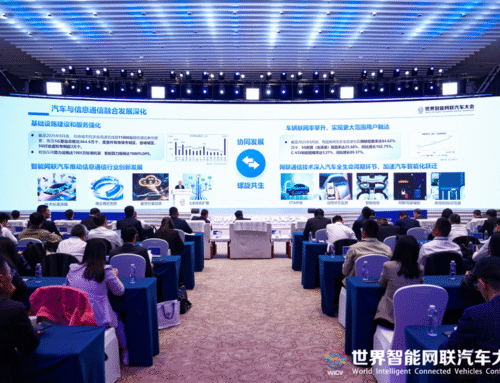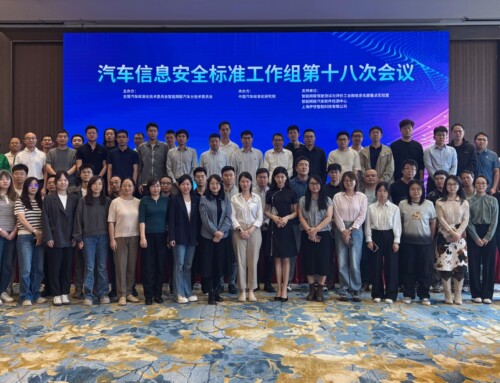On May 20, 2025, the Cyberspace Administration of China (CAC), the National Development and Reform Commission (NDRC), and the Ministry of Industry and Information Technology (MIIT) jointly issued the 2025 Key Points for Advancing Large-Scale IPv6 Deployment and Application (hereinafter referred to as the Key Points).
The Key Points focus on driving innovation and integration in IPv6 technologies and applications, aiming to enhance endogenous development momentum, improve the technology and industrial ecosystem, and provide strong support for building China into a cyber power.
The Key Points set forth the targets for 2025:
- By the end of 2025, China aims to fully establisha globally leading IPv6 technology, industry, infrastructure, application, and security ecosystem.
- The number of active IPv6 users is expected to reach 850 million, with 1.1 billion IoT IPv6 connections. IPv6 traffic should account for 27% of fixed networks and 70% of mobile networks.
- The endogenous growth momentum of IPv6 will be significantly enhanced, with a more effective market-driven dynamic.
- The IPv6 user experience will be markedly improved, end-to-end network performance will be continuously optimized, and the scale of IPv6-enabled content sources will keep expanding.
- New networks, applications, services, and devices will adopt IPv6 by default. IPv6 deployment among government and enterprise institutionswill be significantly improved, with government office networks undergoing accelerated IPv6 upgrades and enterprises seeing a substantial rise in IPv6 traffic over dedicated internet lines.
- IPv6 single-stack deployment will continue to advance, with broader promotion of single-stack applications.
- The IPv6 innovation ecosystem will be further refined, and the IPv6 standards system will become more complete.
- IPv6 security capabilities will continue to improve, with enhanced features and protection capabilities across various security products.
The Key points in 2024 emphasized on expanding the application of “IPv6+” innovation technology; yet this priority was removed from the 2025 Key Points. It is reasonable to infer that China at the moment prefers to prioritize accelerating the large-scale deployment of IPv6 and stablizing its adoption over pursuing innovation of new technology. Deepening IPv6 penetration across the market is seen as a more urgent need. Moreover, the scope of IPv6 application is moving beyond home appliance and smart home device to include government network and enterprise systems. In line with the objective to achieve full market penetration of IPv6 technology, the completion of IPv6 standards system becomes imperative in 2025 to support rapid innovation and facilitate market maturity.
To achieve the above objectives, the Key Points outline 42 priority tasks across 9 key areas.
| Key Areas | Priority Tasks under the Key Areas |
| 1. Enhance internal development momentum | 1. Strengthen policy support
2. Leverage market mechanisms 3. Unlock IPv6 technology advantages 4. Improve IPv6 address resource application and planning |
| 2. Strengthen network service support | 5. Optimize IPv6 networks
6. Improve IPv6 service quality 7. Enhance IPv6 interconnection capabilities 8. Accelerate IPv6 deployment in broadcast networks |
| 3. Increase supply of application infrastructure | 9. Improve IPv6 usability in cloud services
10. Optimize IPv6 service quality in content delivery networks 11. Expand IPv6 support in data centers 12. Promote IPv6 integration with AI development |
| 4. Deepen large-scale single-stack deployment | 13. Enhance IPv6 single-stack end-to-end capabilities
14. Expand the scope of IPv6 single-stack application deployment |
| 5. Improve terminal device connectivity | 15. Strengthen IPv6 testing for terminal devices
16. Accelerate upgrade and replacement of existing devices 17. Expand IPv6 support among smart home devices 18. Promote IPv6 applications in the IoT sector |
| 6. Deepen integrated applications | 19. Increase IPv6 traffic volume through commercial applications
20. Advance IPv6 evolution in e-government applications 21. Deepen IPv6 transformation in central SOEs 22. Expand IPv6 innovations in the financial sector 23. Promote IPv6 deployment in Ministry of Agriculture and Rural Affairs systems 24. Enhance IPv6 network performance and access in the education sector 25. Advance IPv6 upgrades in the Ministry of Human Resources and Social Security systems 26. Deepen IPv6 upgrades in civil affairs government information system 27. Strengthen IPv6 upgrades in the healthcare sector 28. Promote IPv6 applications in transportation digital infrastructure 29. Expand IPv6 applications in the industrial internet 30. Advance IPv6 development in the water resources sector 31. Accelerate IPv6 upgrades in natural resources and environmental protection systems 32. Promote full IPv6 access in emergency management business systems |
| 7. Promote innovation ecosystem and standards development | 33. Strengthen the “IPv6+” innovation ecosystem
34. Advance internet architecture innovation and pilot applications 35. Continue to develop and implement national IPv6 standards 36. Enhance China’s influence on international IPv6 standards |
| 8. Strengthen pilots and publicity | 37. Deepen IPv6 pilot actions in key cities
38. Innovate publicity formats and content 39. Enrich industry exchange activities |
| 9. Strengthen cybersecurity assurance | 40. Enhance IPv6 network security protection and supervision
41. Improve IPv6 security risk assessment and technical practice capabilities 42. Promote the development and application of IPv6 security products |
Notably, Key Area No.6 – Deepen integrated application carries the greatest weight which reinforces the analysis that China’s top priority is achieving full market penetration of IPv6. The development of standards system is likely in alignment with this objective. SESEC will keep a close watch on China’s IPv6 standardization activities and provide timely updates.




